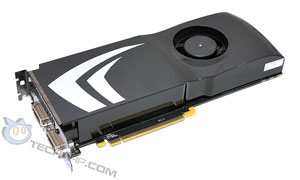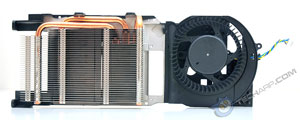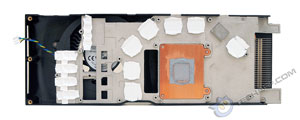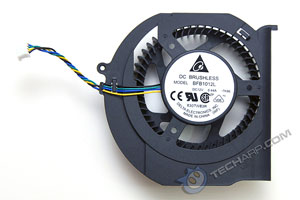Overclocking The NVIDIA GeForce 9800 GTX+
The NVIDIA GeForce 9800 GTX+ is based on the new 55nm version of the venerable NVIDIA G92 GPU. The original 65nm G92 GPU was used to power cards like the GeForce 8800 GTS 512MB and the GeForce 8800 GT as well as the GeForce 9800 GTX.
Like all G92-based graphics cards, the GeForce 9800 GTX+ supports PCI Express 2.0, DirectX 10 and a massively-parallel unified architecture. It also features the NVIDIA VP2 video processor. For more details on the G92 GPU, take a look our NVIDIA GeForce 8800 GT Tech Report.
As we saw it our review of the GeForce 9800 GTX+, the card is really just a minor improvement of the GeForce 9800 GTX. Other than the use of the smaller and cooler version of the G92 GPU, the GeForce 9800 GTX+ has a slightly higher core clock speed. Its GDDR3 memory clock speed remained at 1.1 GHz. Hence, the minor addition of a + (plus) to its name, instead of a full number change.
With that said, the use of the new 55 nm G92 processor does provide the GeForce 9800 GTX+ with some overclocking potential. After all, our temperature tests showed that the new GPU was actually cool enough to run 3D games with the fan set to the absolute minimum! So, we just had to try overclocking it to see just how much more overclockable the new GPU would be.
Like in our previous overclocking guides, we did not want this to be an example of extreme overclocking, where you would need to resort to third-party coolers. With that method, you can achieve an incredible degree of overclocking but it would come at a significant cost. We wanted this attempt to come at "no cost" to the user. That meant overclocking the GeForce 9800 GTX+ using its standard cooler. Let's take a look at the cooler.
The GeForce 9800 GTX+ Cooler
The GeForce 9800 GTX+ uses a large cast aluminium heatsink with a copper insert, similar to the one used in the GeForce 8800 GTX. This allows for a better thermal transfer to the heatsink and yet keeps the cost and weight low. With the shroud in place, the air is directed through the aluminium fins and out the vents on the card bracket.
The cooler is powered by a single Delta BFB1012L blower fan placed to the right side of the cooler. This is the same blower fan used in the GeForce 8800 GTS 512MB and the GeForce 8800 Ultra. According to Delta, the BFB1012L is a 12 V fan with ball bearings and a current draw of 0.32 A and a power output of 3.84 W. At these specifications, it spins at at slow 2700 RPM but moves a remarkable 19.07 CFM or 0.54 CMM with a noise level of 45 dBA.
However, as you can see, the fan installed in this card actually draws 0.44 A. This gives it a much higher power output of 5.28 W. Although we cannot just extrapolate its performance from the increase in power output, it stands to reason that this cooler will perform much better than Delta's specifications. Of course, as it is with all newer graphics cards, the GeForce 9800 GTX+ will dynamically adjust its fan speed according to the thermal load.
Support Tech ARP!
If you like our work, you can help support out work by visiting our sponsors, participate in the Tech ARP Forums, or even donate to our fund. Any help you can render is greatly appreciated!







 Add to Reddit
Add to Reddit




